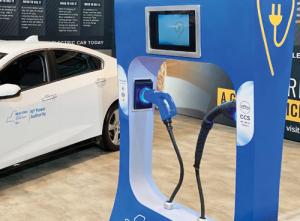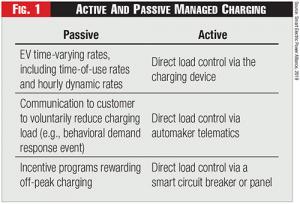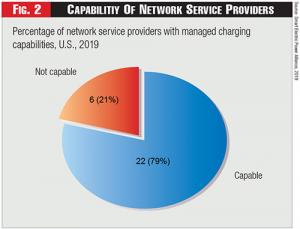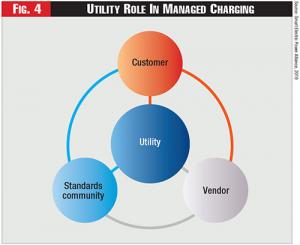Time to Act is Now
Erika Myers is the principal of transportation electrification for SEPA. Erika has worked in the EV industry for over a decade and specializes in the nexus among EVs, clean energy, and electric utilities.
With estimates of more than twenty million electric vehicles (EVs) expected on the road in the U.S. by 2030, EVs represent the most significant new electric load since the rise of air conditioning in the 1950s.

The impact of these EVs on the grid will be significant. Today, many stakeholders, including electric utilities, regulatory commissions, consumer advocates, environmental organizations, and others strongly contend that the electric vehicle future must include some form of managed charging in order to reap the maximum benefits for consumers, the grid, and society as a whole. Despite this symphony of support, much needs to be done to make this vision a reality.
According to the Smart Electric Power Alliance report titled, A Comprehensive Guide to Electric Vehicle Managed Charging, managed charging happens in two ways - indirect and direct load control. Indirect load control, which is also known as passive or behavioral load control, relies on modifying customer behavior to affect charging patterns. For example, EV time-of-use rates provide predetermined price signals to influence when customers choose to charge their vehicles. Another example could involve notifying users and requesting a certain behavior without providing an incentive.
Direct load control, which is also known as active managed charging, relies on communications, such as dispatch signals originating from a utility or aggregator and sent to a vehicle or charger, to control charging in a predetermined way.
The communications signals used in managed charging can adjust the time and/or rate of charge (both load curtailment and load increase), relative to a baseline. Further, utilities, load balancing authorities via aggregators, or other third parties can use these controls to provide grid services such as capacity, emergency load reduction, regulation, or to absorb excess generation from renewable energy resources like solar and wind.
 Erika Myers: Without swift action to resolve the outstanding business, policy, and technological barriers to managed charging, we may look back in a decade and wonder what went wrong.
Erika Myers: Without swift action to resolve the outstanding business, policy, and technological barriers to managed charging, we may look back in a decade and wonder what went wrong.
See Figure 1.
Managed Charging Challenges
According to the SEPA report, the good news is that the total percentage of vendors with managed charging-capable equipment has increased to sixty-three percent from thirty-three percent in 2017. Further, the number of Network Service Providers that provide managed charging platforms has increased more than three-fold since 2017.
See Figure 2 and Figure 3.
 Figure 1 - Active And Passive Managed Charging
Figure 1 - Active And Passive Managed Charging
However, some of these chargers and platforms are not currently programmed to speak a common open language. Although broad industry consensus exists regarding the potential of managed charging in the U.S., stakeholders have not agreed to a common open protocol or set of protocols to help reduce costs, avoid stranded assets, and streamline the implementation of managed charging programs.
Moreover, the industry must continue to develop affordable, reliable, and customer-friendly systems to deliver communication signals to the charging devices and vehicles.
In the United Kingdom for comparison, the EV community has agreed on the value of using managed charging to reduce distribution infrastructure upgrade costs. The U.K. government has mandated that all future EV charging equipment must be managed charging-capable, though work remains to define what this means.
The U.K. government has also invested millions of dollars in demonstration projects to test the capabilities of managed charging and understand consumer behavior, as documented in a 2018 SEPA blog, Why the U.K. is beating the U.S. on transportation electrification.
 Figure 2 - Capabilitiy Of Network Service Providers
Figure 2 - Capabilitiy Of Network Service Providers
Without swift action to resolve the outstanding business, policy, and technological barriers to managed charging, we may look back in a decade and wonder what went wrong. Just as we now have over a million distributed residential solar systems without advanced inverters due to the long lag time in the development of standards, we could see millions of EVs and chargers without managed charging functionality.
This could lead to grid constraints and increased transmission and distribution peaks that prompt the construction of more peaker plants, unplanned grid upgrades, and other costly remedies.
Managed EV charging can also be a useful means to better align and balance a power supply that is increasingly diverse, decentralized, renewable, and intermittent with a flexible demand. By supporting the integration of more renewables and avoiding dispatch of peaker plants, managed charging can reduce emissions in the transportation and utility sectors and improve grid economics.
Regulators are Key
 Figure 3 - Capabilitiy Of EVSE Manufacturers
Figure 3 - Capabilitiy Of EVSE Manufacturers
Our knowledge of the value of managed charging is incomplete and largely dependent on specific use-cases. For example, according to a report by the Illinois Citizens Utility Board from 2019, optimizing charging patterns for in-state EVs can generate significant savings for utilities and customers. Shared savings could reach as much as 2.6 billion dollars in Illinois by 2030 if regulations encouraging off-peak charging through charging optimization are implemented.
Regulators could play a key role in developing valuable programs by approving and encouraging demonstration projects for a broad range of managed charging program design options. The more data the industry can collect about program outcomes, the more quickly and efficiently we can make progress.
Further, regulators can help ensure the proposed managed charging solutions are simple to implement, low risk, and deliver net-positive results to the participants, including the customers, utility, and auto manufacturers. At a minimum, to fully leverage managed charging benefits, all chargers financed via the rate base should be managed charging capable.
Electric Utilities Critically Important
 Figure 4 - Utility Role In Managed Charging
Figure 4 - Utility Role In Managed Charging
Electric utilities have an important role to play in improving the integration of EVs with the grid. First, utilities are supporting EV charging infrastructure deployment through direct procurement and providing rebates or other incentives to encourage customer and third-party investments. By requiring open protocols as a component of a utility managed program, utilities can help move the industry forward.
See Figure 4.
Second, utilities are contributing to the development of standards for managed charging equipment and are supporting the evolution of software and other methods used to modulate charging rates or shift charging events to provide grid services. EVs, with a growing charging load that can be flexible and intelligent, need to be part of the larger discussion around the evolution of the grid and the future of the electric utility industry.
As more EVs hit the road in the coming years, their impacts will influence utility operations across many dimensions, from planning to operations and from transmission to distribution. Utilities are uniquely positioned to take proactive steps now, laying the groundwork for plans and programs to develop policies, regulations, and open standards and protocols to ensure that EVs become valuable grid assets.
As EV-related regulatory filings increase, the time is now for regulators to understand the valuable role of managed charging. The cost of acting now is low; the cost of waiting is high.
Lead image: At this year’s New York Auto Show, NYPA promoting EV charging.


